Abstract
1. Micro-electrode recordings were made from rabbit retinal ganglion cells or their axons. Of particular interest were direction-selective units; the common on—off type represented 20·6% of the total sample (762 units), and the on-type comprised 5% of the total.
2. From the large sample of direction-selective units, it was found that on—off units were maximally sensitive to only four directions of movement; these directions, in the visual field, were, roughly, anterior, superior, posterior and inferior. The on-type units were maximally sensitive to only three directions: anterior, superior and inferior.
3. The direction-selective unit's responses vary with stimulus velocity; both unit types are more sensitive to velocity change than to absolute speed. On—off units respond to movement at speeds from 6′/sec to 10°/sec; the on-type units responded as slowly as 30″/sec up to about 2°/sec. On-type units are clearly slow-movement detectors.
4. The distribution of direction-selective units depends on the retinal locality. On—off units are more common outside the `visual streak' (area centralis) than within it, while the reverse is true for the on-type units.
5. A stimulus configuration was found which would elicit responses from on-type units when the stimulus was moved in the null direction. This `paradoxical response' was shown to be associated with the silent receptive field surround.
6. The four preferred directions of the on—off units were shown to correspond to the directions of retinal image motion produced by contractions of the four rectus eye muscles. This fact, combined with data on velocity sensitivity and retinal distribution of on—off units, suggests that the on—off units are involved in control of reflex eye movements.
7. The on—off direction-selective units may provide error signals to a visual servo system which minimizes retinal image motion. This hypothesis agrees with the known characteristics of the rabbit's visual following reflexes, specifically, the slow phase of optokinetic nystagmus.
Full text
PDF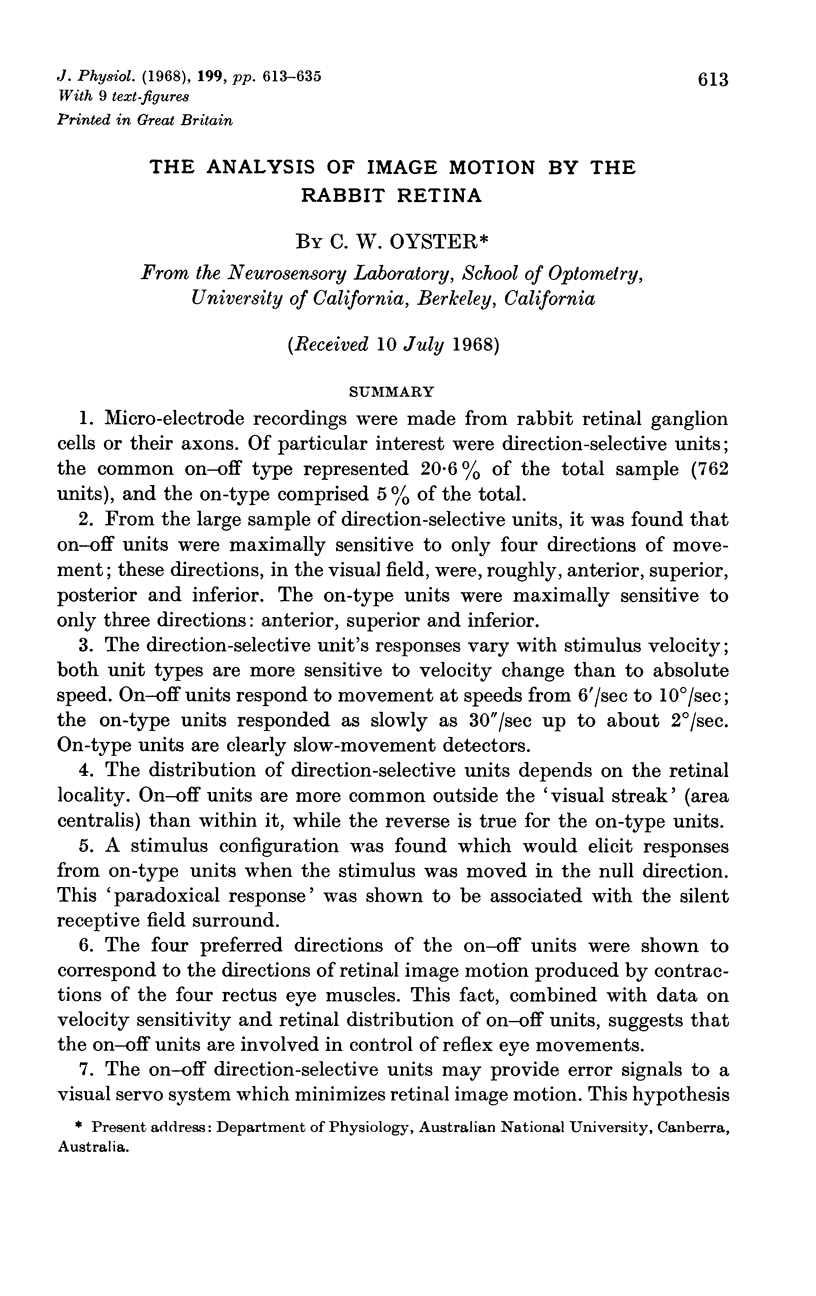
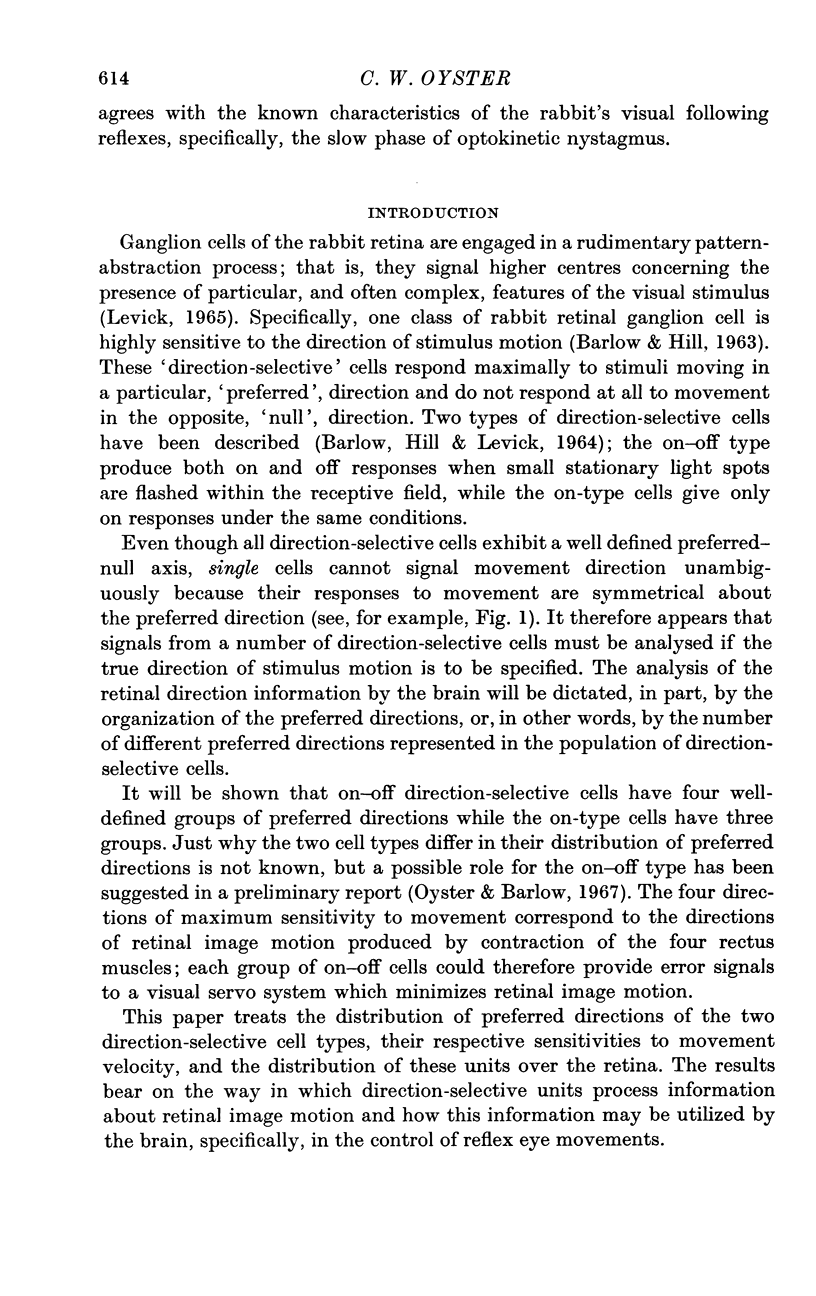

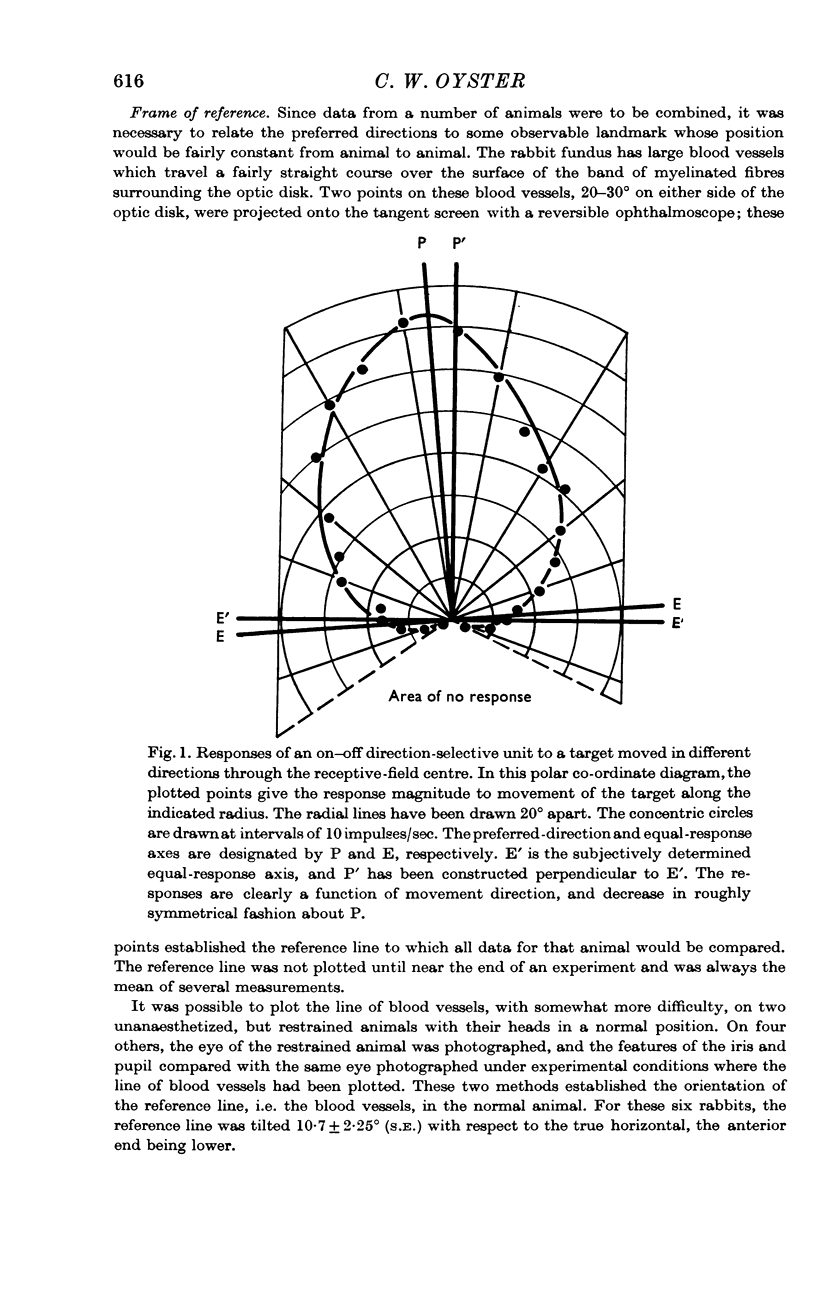






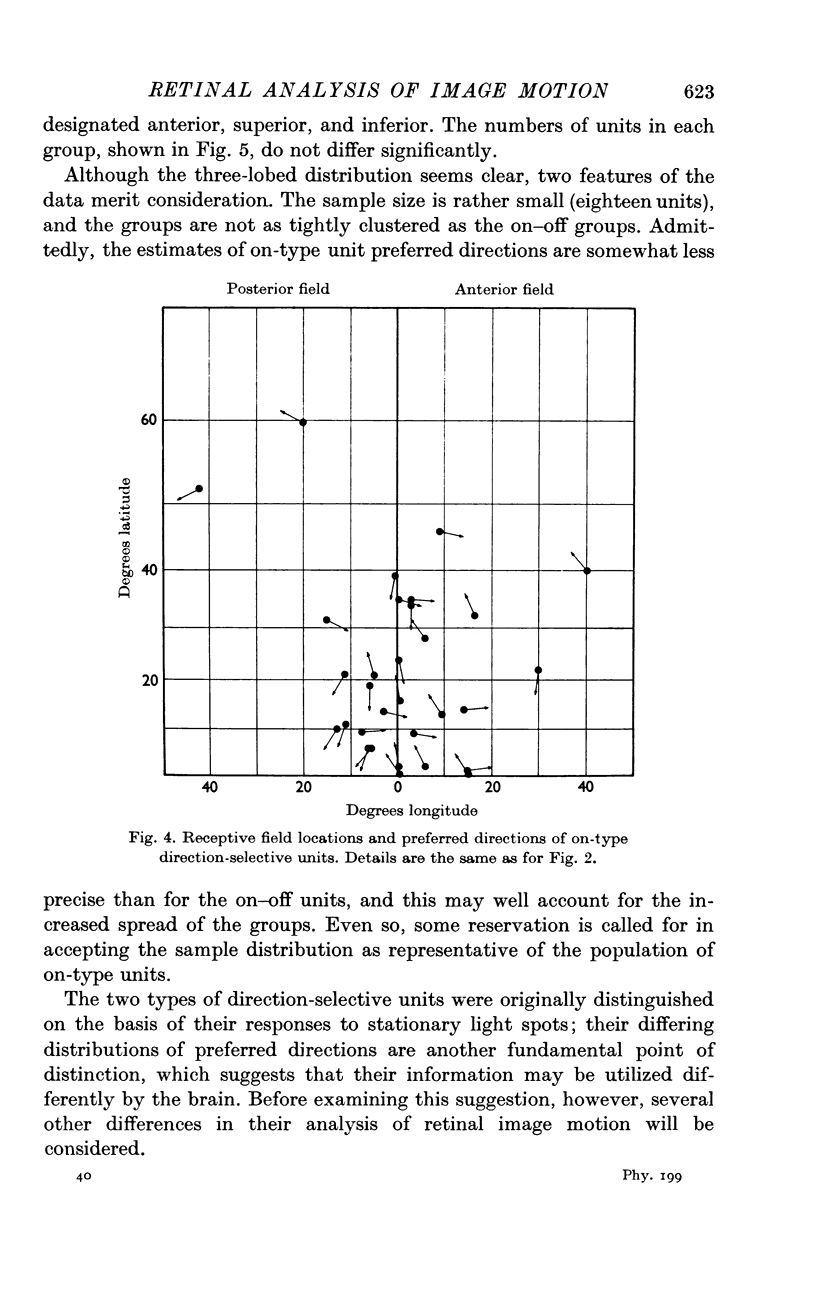

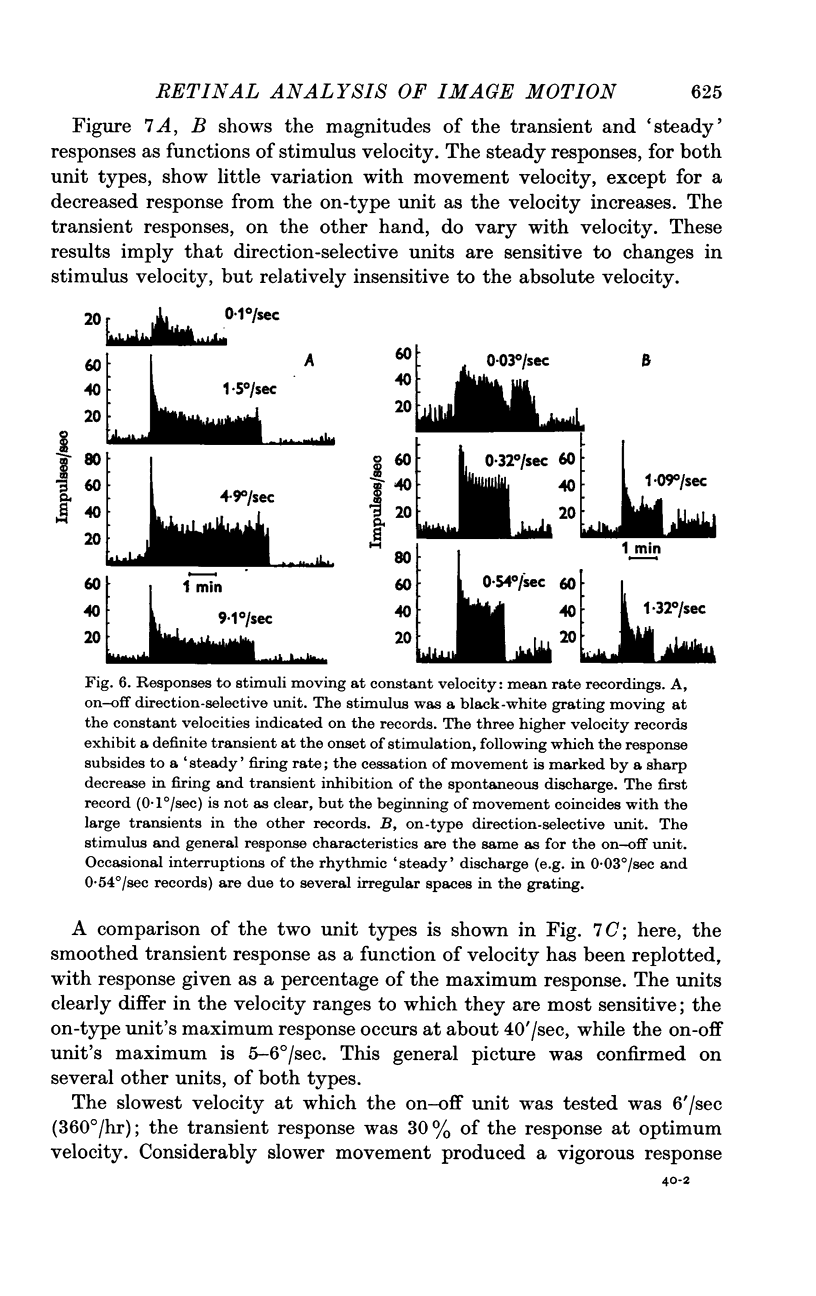
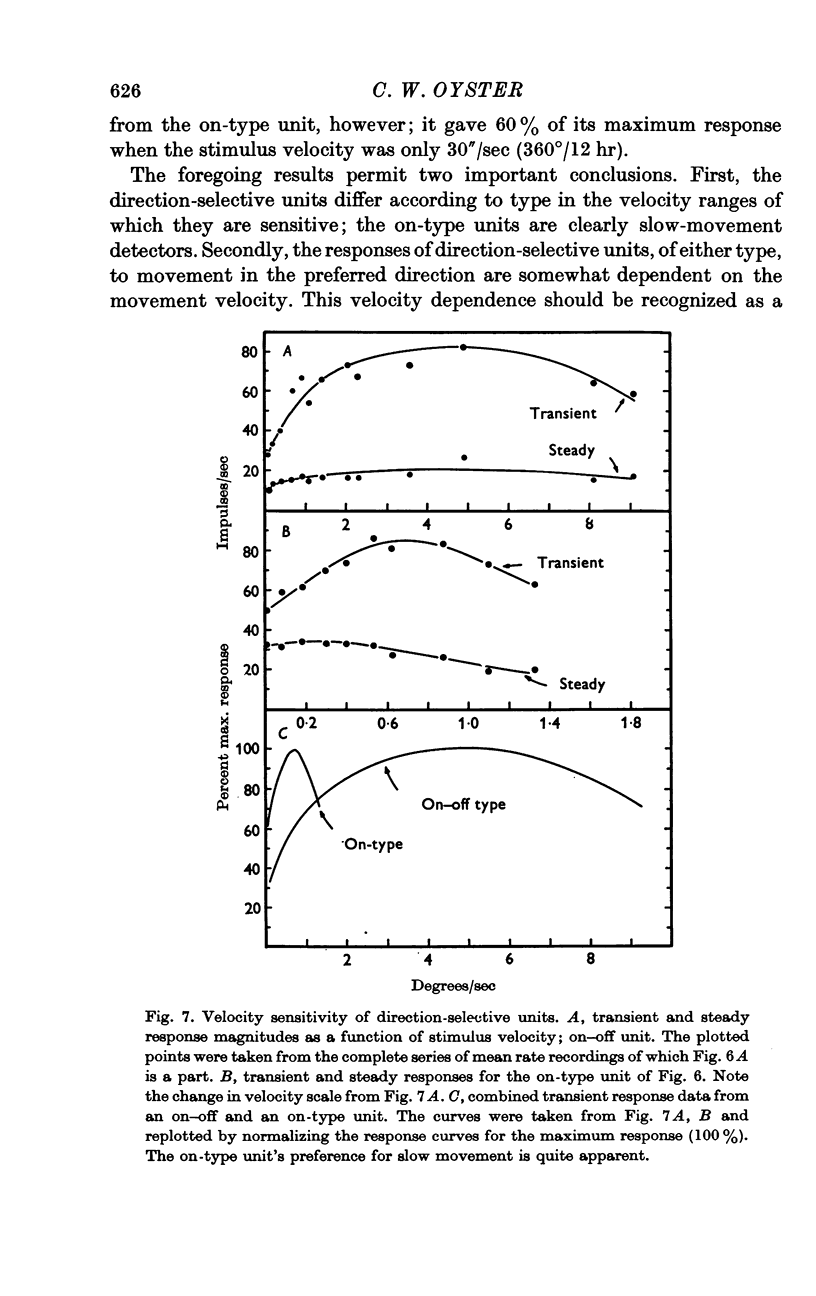

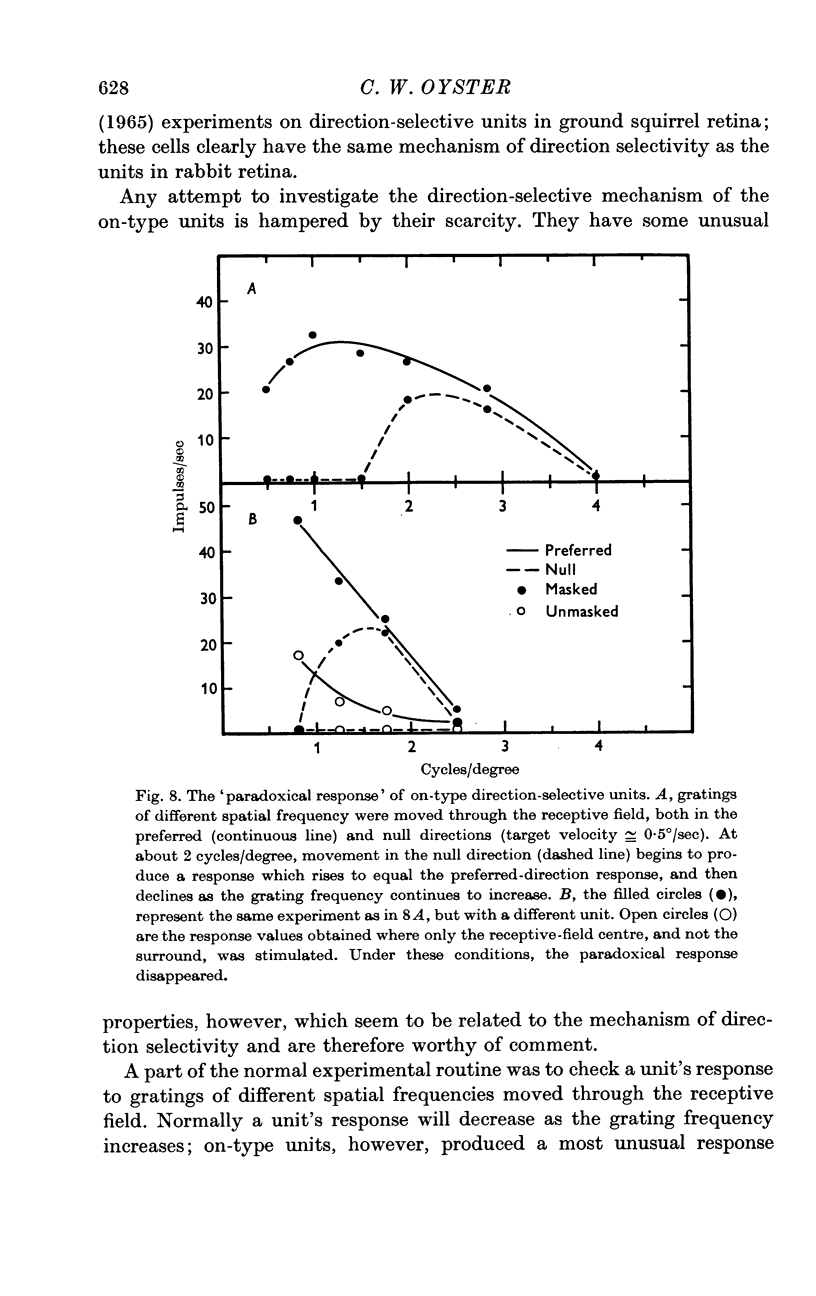
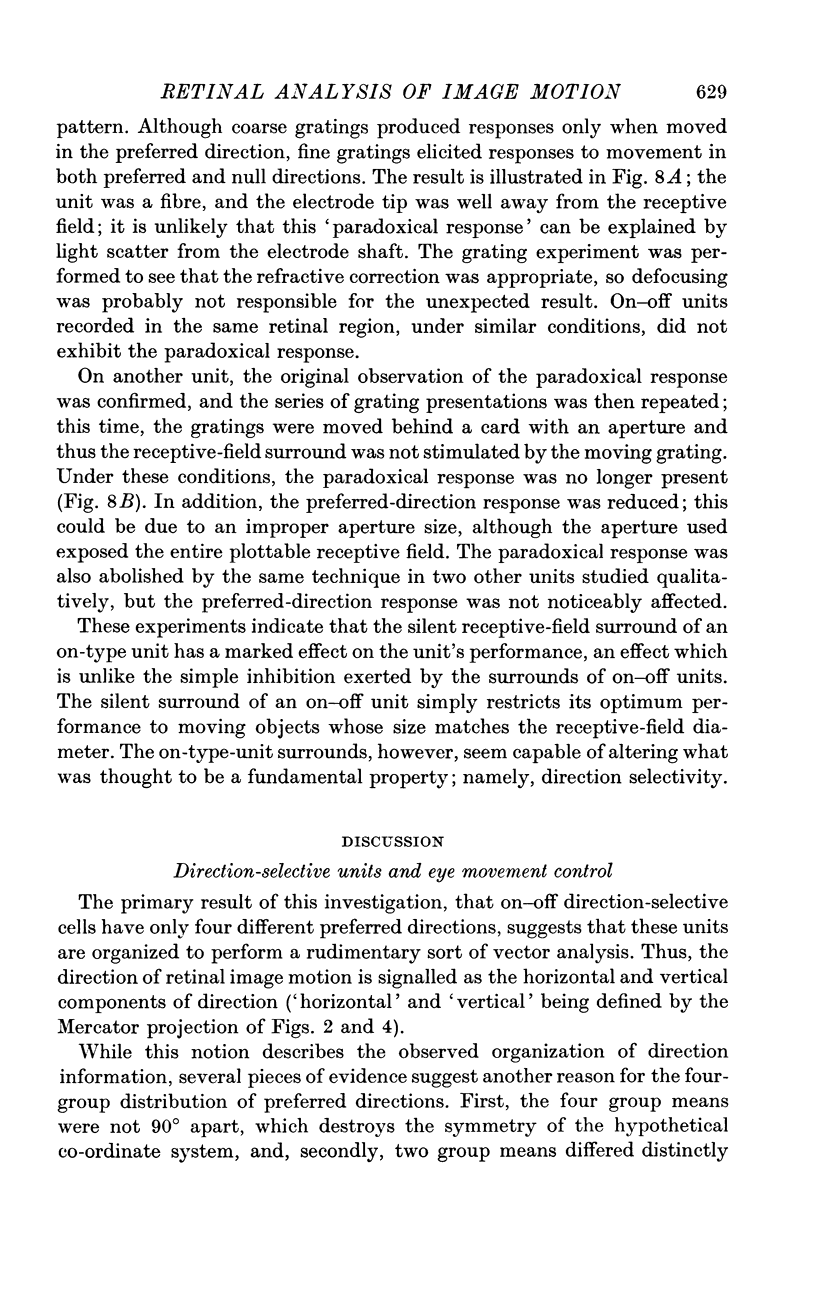

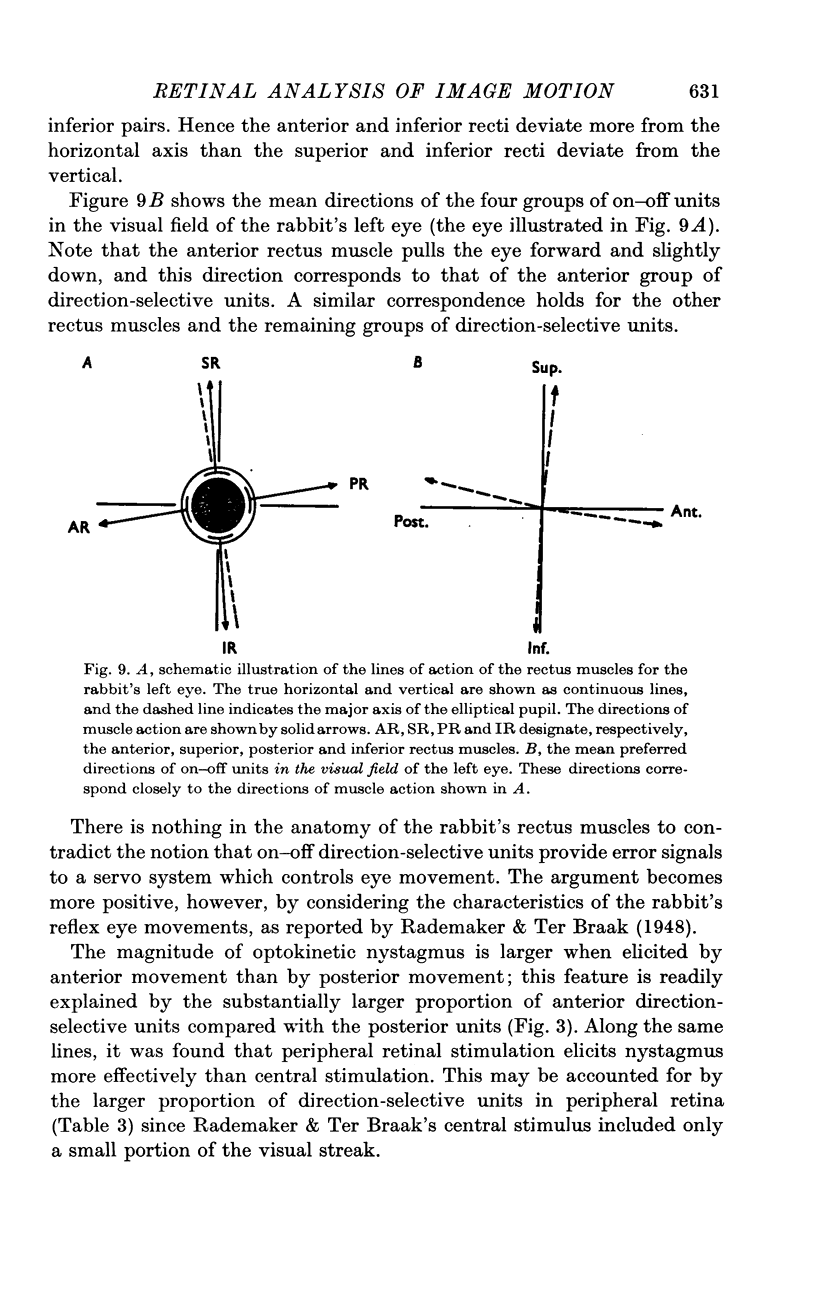




Selected References
These references are in PubMed. This may not be the complete list of references from this article.
- BARLOW H. B., HILL R. M., LEVICK W. R. RETINAL GANGLION CELLS RESPONDING SELECTIVELY TO DIRECTION AND SPEED OF IMAGE MOTION IN THE RABBIT. J Physiol. 1964 Oct;173:377–407. doi: 10.1113/jphysiol.1964.sp007463. [DOI] [PMC free article] [PubMed] [Google Scholar]
- BARLOW H. B., HILL R. M. Selective sensitivity to direction of movement in ganglion cells of the rabbit retina. Science. 1963 Feb 1;139(3553):412–414. doi: 10.1126/science.139.3553.412. [DOI] [PubMed] [Google Scholar]
- Barlow H. B., Levick W. R. The mechanism of directionally selective units in rabbit's retina. J Physiol. 1965 Jun;178(3):477–504. doi: 10.1113/jphysiol.1965.sp007638. [DOI] [PMC free article] [PubMed] [Google Scholar]
- Dowling J. E., Brown J. E., Major D. Synapses of horizontal cells in rabbit and cat retinas. Science. 1966 Sep 30;153(3744):1639–1641. doi: 10.1126/science.153.3744.1639. [DOI] [PubMed] [Google Scholar]
- Hill R. M. Receptive field properties of the superior colliculus of the rabbit. Nature. 1966 Sep 24;211(5056):1407–1409. doi: 10.1038/2111407a0. [DOI] [PubMed] [Google Scholar]
- Levick W. R. Receptive fields and trigger features of ganglion cells in the visual streak of the rabbits retina. J Physiol. 1967 Feb;188(3):285–307. doi: 10.1113/jphysiol.1967.sp008140. [DOI] [PMC free article] [PubMed] [Google Scholar]
- Michael C. R. Receptive fields of directionally selective units in the optic nerve of the ground squirrel. Science. 1966 May 20;152(3725):1092–1095. doi: 10.1126/science.152.3725.1092. [DOI] [PubMed] [Google Scholar]
- Michael C. R. Receptive fields of single optic nerve fibers in a mammal with an all-cone retina. II: directionally selective units. J Neurophysiol. 1968 Mar;31(2):257–267. doi: 10.1152/jn.1968.31.2.257. [DOI] [PubMed] [Google Scholar]
- Oyster C. W., Barlow H. B. Direction-selective units in rabbit retina: distribution of preferred directions. Science. 1967 Feb 17;155(3764):841–842. doi: 10.1126/science.155.3764.841. [DOI] [PubMed] [Google Scholar]
- Rodieck R. W. Receptive fields in the cat retina: a new type. Science. 1967 Jul 7;157(3784):90–92. doi: 10.1126/science.157.3784.90. [DOI] [PubMed] [Google Scholar]
- Stone J., Fabian M. Specialized receptive fields of the cat's retina. Science. 1966 May 27;152(3726):1277–1279. doi: 10.1126/science.152.3726.1277. [DOI] [PubMed] [Google Scholar]


